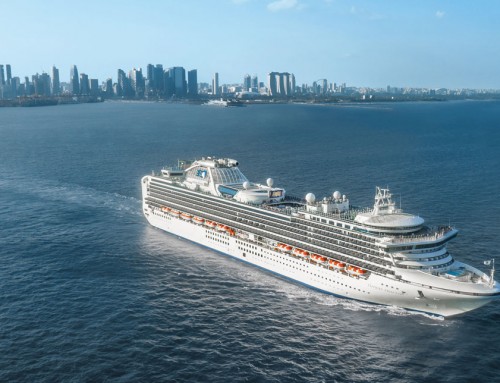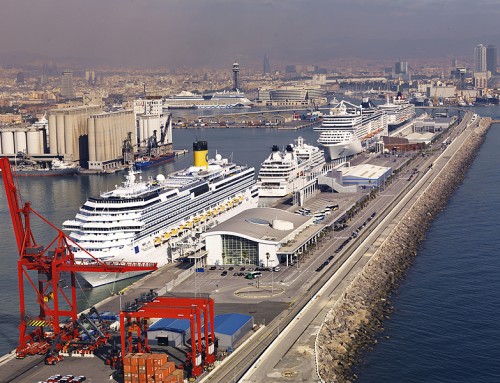 The skies over Venice turned from blue to black and then to vivid orange as a thunderstorm passed overhead at sunset. Spurred on by a sirocco wind and an almost full moon, high tide threatened to spill from the lagoon into Piazza San Marco, where raised duckboards were ready to provide a dry path for the visitors.
The skies over Venice turned from blue to black and then to vivid orange as a thunderstorm passed overhead at sunset. Spurred on by a sirocco wind and an almost full moon, high tide threatened to spill from the lagoon into Piazza San Marco, where raised duckboards were ready to provide a dry path for the visitors.
So what did I choose to do? Go underground, of course, which also meant I was descending below sea level.
As one of the passengers from Voyages to Antiquity’s Aegean Odyssey afforded the rare privilege of visiting the basilica of St Mark after dark, I was also lucky enough to go where the hordes of daytime visitors are not allowed – into the crypt (pictured above).
And I kept my feet dry, for – as our guide explained – a multi-million effort by French engineers has turned the chambers into a swimming pool in reverse, with the water kept on the outside. The powerful smell that hung heavy in the air was not burning incense or even the notorious Venetian drains. It was, she explained, the result of the brickwork being treated with sulphur.
What brickwork it was ! Centuries old and bare of adornment, unlike that in the church above, every inch of which is covered in gold and glass mosaic tiles illustrating stories from the New Testament.
Visiting the basilica in the past I had been warned against taking photographs, and in any case it is normally too crowded to come away with anything worthwhile. Last night we were told we were free to use our cameras, although when an attendant gestured to me across the crypt I first thought I was going to be told to stop. To my surprise, he led me round a corner and revealed a hidden cross of green glass (or it could have been semi-precious stones) and encouraged me to take a picture.
Back in the body of the church the Voyages to Antiquity guests were led behind the altar and the tomb of St Mark to a priceless gold and cloisonne altar piece which is another treasure denied regular visitors.
Then it was back to the ship ready for a midnight sailaway – the only disadvantage of our private tour of St Marks being that we steamed down the Grand Canal in darkness and were denied the spectacular views over the rooftops which daytime departures enjoy.
This morning I was underground again – beneath the central arena of the Roman amphitheatre in the Croatian town of Pula.
The sixth-biggest in the world, it is ahead of Rome’s Colosseum in opening its subterranean passages to the public. Two thousand years ago gladiators, lions and bears would have been held in cells carved out of solid rock, before being forced to fight against each other in front of crowds of up to 20,000.
Now the dank corridors hold displays of ancient amphoras and old olive presses, while upstairs the arena hosts an annual film festival and occasional performances by the likes of Sting and Elton John.
The amphitheatre is remarkably well-preserved, its triple-storied walls almost complete, although much of the interior stone seating has long-since been used as a convenient quarry and carted away for building.
Some was taken as far as Venice, and a small plaque pays tribute to the local dignitary who – as long ago as the 16th century – successfully campaigned to prevent La Serenissima from removing the entire building for reconstruction.
Fair’s fair. The wealthy Doges looted treasures from around the world for their palaces and churches. And today Pula still has a world-class treasure of its own.






Leave A Comment